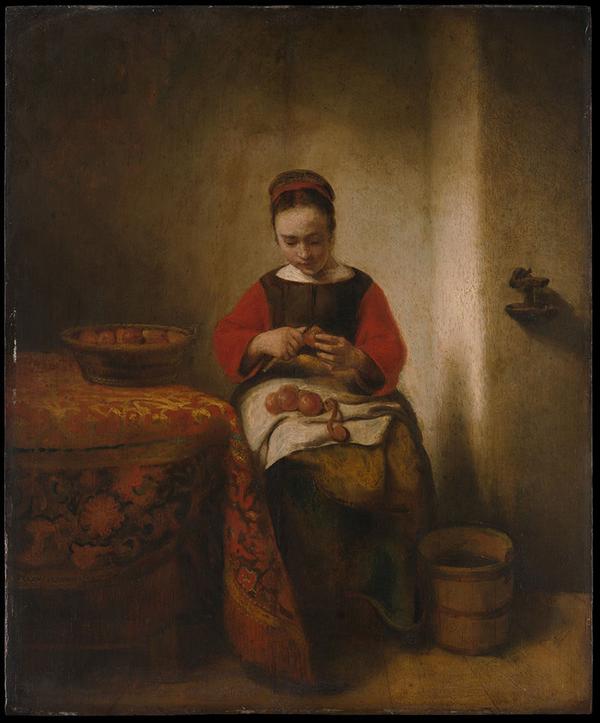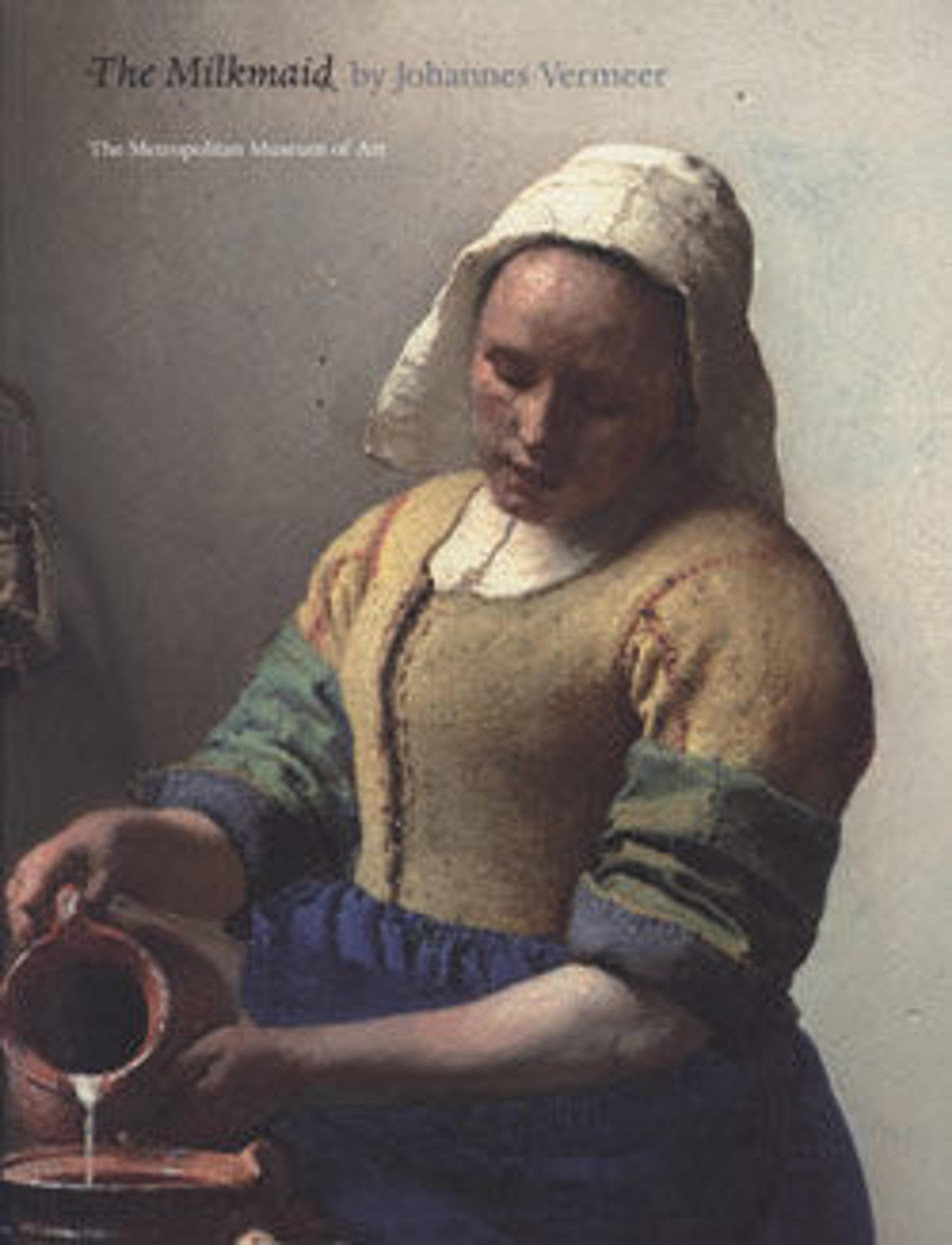Young Woman Peeling Apples
Artwork Details
- Title:Young Woman Peeling Apples
- Artist:Nicolaes Maes (Dutch, Dordrecht 1634–1693 Amsterdam)
- Date:ca. 1655
- Medium:Oil on wood
- Dimensions:21 1/2 x 18 in. (54.6 x 45.7 cm)
- Classification:Paintings
- Credit Line:Bequest of Benjamin Altman, 1913
- Object Number:14.40.612
- Curatorial Department: European Paintings
Audio

5257. Nicolaes Maes, Young Woman Peeling Apples
NARRATOR: Here, the light shines on an image of virtue: a young girl performing a humble task. In his chosen subject, Nicolaes Maes followed his teacher Rembrandt, who made frequent sketches of the women in his household performing ordinary tasks.
GAVIN FINNEY: They are painting real life, and in so many of these pictures, you can see real people going about their business. Nothing’s perfect. You know, there's dirt on the floor. They have an amazing eye for domestic detail. And they paint working men and working women.
NARRATOR: For cinematographer Gavin Finney, one of the first things he notices about this painting is the light. He tracks its source by following the artist’s trail of clues.
GAVIN FINNEY: If you look at the shadow that the girl is throwing onto the wall, which is quite low down, and the shadow that the wooden candleholder on the wall is throwing, they give you the angle of the window. All the light is coming from a small window quite high up, to the viewer’s left; her right. And that would imply that she’s in the basement or low down in the house, probably in a kitchen or in a cellar.
NARRATOR: Indeed, this painting is arguably as much a portrait of light as of the young girl. Like his peer, Vermeer, and his onetime teacher, Rembrandt, Maes manipulated the light for a desired effect.
GAVIN FINNEY: It seemed to be the point where artists finally got how light behaves realistically in a room. And how it bounces around. It’s not just flat, they weren’t just painting an object. When they rendered the lighting on the faces of the characters, or on the tables, on the walls, the way they did it so correctly—that’s part of what makes the painting come to life and look completely real.
NARRATOR: Finney was the Cinematographer of the BBC drama, The Miniaturist, set in Amsterdam in the 1680s. Paintings from that era were an invaluable resource in his research and preparation.
GAVIN FINNEY: Absolutely my first point of call is the art of the time, because that gives you access to firsthand witnesses; people who were there. And very much for me, the kind of lighting they would have seen.
More Artwork
Research Resources
The Met provides unparalleled resources for research and welcomes an international community of students and scholars. The Met's Open Access API is where creators and researchers can connect to the The Met collection. Open Access data and public domain images are available for unrestricted commercial and noncommercial use without permission or fee.
To request images under copyright and other restrictions, please use this Image Request form.
Feedback
We continue to research and examine historical and cultural context for objects in The Met collection. If you have comments or questions about this object record, please contact us using the form below. The Museum looks forward to receiving your comments.
